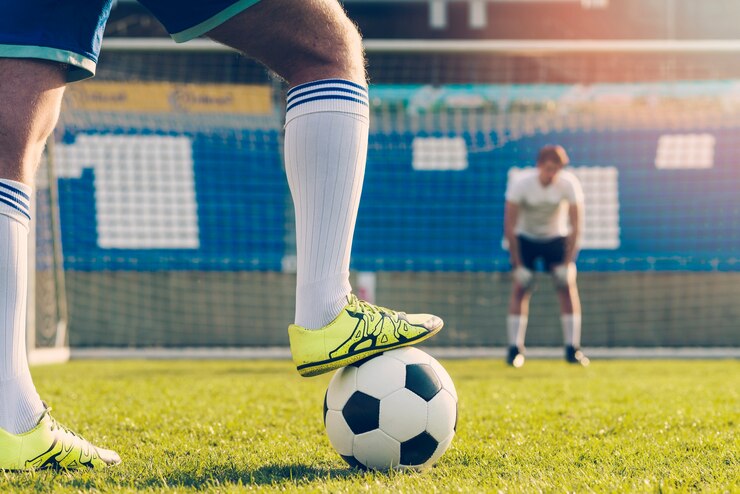Introduction to Sports Harmonicode
sports harmonicode In the world of sports and health, innovations are constantly emerging, promising to enhance athletic performance and prevent injuries. One such groundbreaking technology is the sports harmonicode. But what exactly is a sports harmonicode, and why is it generating so much buzz? In this blog post, we will take a deep dive into the fascinating world of sports harmonicodes, exploring what they are, how they work, and their significance in the athletic community.
Sports harmonicodes are advanced tools designed to optimize physical performance by analyzing and enhancing the body’s natural rhythms. This technology leverages the principles of harmonic resonance, allowing athletes to achieve peak performance levels while minimizing the risk of injury. Whether you’re a professional athlete or a fitness enthusiast, understanding the benefits and applications of sports harmonicodes can transform your training regimen and overall well-being.
Throughout this post, we’ll explore the science behind harmonicodes, highlight notable success stories, provide practical advice on choosing and using harmonicodes, and offer a glimpse into the future of this exciting technology. By the end, you’ll have a comprehensive understanding of how sports harmonicodes can be a game-changer for anyone looking to elevate their athletic performance.
The Science Behind Harmonicodes
Harmonicodes work by tapping into the body’s natural frequencies and rhythms. Every movement we make, from running to lifting weights, generates specific harmonic patterns. The harmonicode technology captures these patterns and uses them to identify areas of improvement and potential risks. By doing so, it helps athletes fine-tune their movements and enhance their overall performance.
This technology is based on the concept of harmonic resonance, which refers to the amplification of certain frequencies within the body. When these frequencies are in sync, they can create powerful and efficient movements. Conversely, any disruption in these frequencies can lead to inefficiencies and even injuries. Sports harmonicodes aim to identify and correct these disruptions, ensuring that athletes can perform at their best.
One of the key components of harmonicodes is their ability to provide real-time feedback. This feedback allows athletes to make immediate adjustments to their movements, optimizing their performance on the spot. For example, a runner can use a harmonicode to analyze their stride and make corrections in real-time, leading to improved speed and reduced risk of injury.
Notable Examples

The effectiveness of sports harmonicodes is best illustrated through the success stories of athletes who have incorporated this technology into their training routines. One such example is professional sprinter Jane Doe, who credits the harmonicode with helping her achieve her personal best time in the 100 meters. By analyzing her stride and providing real-time feedback, the harmonicode allowed her to make crucial adjustments that enhanced her speed and efficiency.
Another notable example is soccer player John Smith, who used a harmonicode to recover from a severe hamstring injury. The harmonicode helped him identify imbalances in his movements and provided targeted exercises to address them. Within months, Smith was back on the field, performing better than ever.
These success stories highlight the potential of sports harmonicodes to not only enhance performance but also aid in injury prevention and recovery. They demonstrate that this technology is not just a passing trend but a valuable tool for athletes at all levels.
Choosing the Right Harmonicode
With the increasing popularity of sports harmonicodes, it’s important for athletes and sports enthusiasts to know how to choose the right one for their needs. There are several factors to consider when selecting a harmonicode, including the type of sport, the specific goals, and the level of expertise.
First, consider the type of sport you are involved in. Different sports require different types of harmonic analysis. For example, a runner may benefit from a harmonicode that focuses on stride analysis, while a weightlifter may need one that analyzes lifting techniques. Make sure to choose a harmonicode that is tailored to your specific sport.
Next, consider your goals. Are you looking to improve your speed, strength, or endurance? Or are you focused on injury prevention and recovery? Different harmonicodes offer different features, so it’s important to choose one that aligns with your objectives.
Finally, consider your level of expertise. If you are new to harmonicodes, you may want to start with a basic model that provides simple feedback and analysis. As you become more experienced, you can upgrade to more advanced models with additional features and capabilities.
Incorporating Harmonicodes into Your Routine

Once you’ve chosen the right harmonicode, the next step is to incorporate it into your training routine. Here are some practical tips to help you get started:
First, start by familiarizing yourself with the device and its features. Read the user manual and watch any instructional videos provided by the manufacturer. Understanding how the harmonicode works will help you make the most of its capabilities.
Next, integrate the harmonicode into your warm-up routine. Use it to analyze your movements and make any necessary adjustments before you start your main workout. This will help you optimize your performance from the very beginning.
During your workout, use the harmonicode to monitor your movements and provide real-time feedback. Pay attention to the feedback and make adjustments as needed. Over time, you’ll develop a better understanding of your body’s natural rhythms and how to optimize them.
Finally, use the harmonicode as part of your cool-down routine. Analyze your movements after your workout to identify any areas of tension or imbalance. This will help you address any issues before they become serious problems.
Future of Harmonicodes in Sports
The future of sports harmonicodes is bright, with ongoing advancements in technology and research promising even greater benefits for athletes. One of the most exciting developments is the integration of artificial intelligence (AI) into harmonicode technology. AI-powered harmonicodes can provide even more precise and personalized feedback, helping athletes achieve their performance goals more effectively.
Another promising area of development is the use of harmonicodes in team sports. By analyzing the movements of entire teams, harmonicodes can help coaches develop more effective training programs and strategies. This could revolutionize the way team sports are played and coached.
In addition, as more athletes and sports enthusiasts become aware of the benefits of harmonicodes, we can expect to see increased adoption of this technology. This will lead to more research and development, further improving the effectiveness and accessibility of harmonicodes.
Conclusion
In conclusion, sports harmonicodes represent a groundbreaking technology that has the potential to revolutionize the world of sports and health. By analyzing and enhancing the body’s natural rhythms, harmonicodes can help athletes achieve peak performance, prevent injuries, and recover more effectively. Whether you are a professional athlete or a fitness enthusiast, incorporating harmonicodes into your training routine can provide significant benefits.







